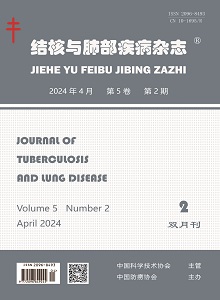Objective To anlyze the characteristics of chest CT imaging and immune indexes in patients with COVID-19. Methods A total of 84 COVID-19 patients in Ningxia between January 24, 2020 and March 7, 2020 were retrospectively studied, including 75 confirmed cases (difinite epidemiological history, fever and/or typical chest CT images, and positive in nucleic acid test) and 9 clinically diagnosed cases (difinite epidemiological history or close contact, typical chest CT imaging, but negative in two nucleic acid tests). According to the dynamic CT imaging and results of immune indexes, the relationship between the changes of chest CT 72 hours after admission and the clinical classification and immune status of COVID-19 patients were analyzed. Results Within 24 hours of admission, the 84 patients were divided into mild (n=14), ordinary (n=59), and severe/critical types (n=11). By CT scan, the proportions of interstitial lesions in bilateral lung and diffuse lesions in bilateral lung in ordinary patients were significantly lower than those in severe/critical patients (1.7% (1/59) vs. 18.2% (2/11), χ2=6.144, P=0.013; 5.1% (3/59) vs. 27.3% (3/11), χ 2=5.824, P=0.016). The classification of 9 patients was progressing 72 hours after admission, therefore, numbers of mild, ordinary, and severe/critical types were changed to 10, 58 and 16, respectively. By CT scan, compared with those in patients of severe/critical type, few/occasional patchy lesions lesions and multiple lesions in bilateral lung in patients of ordinary type were significantly higher (20.7% (12/58) vs.0.0% (0/16), χ 2=3.951, P=0.047; 62.1% (36/58) vs. 18.8% (3/16), χ 2=9.441, P=0.002); while interstitial lesionsn and diffuse lesions in bilateral lung in patients of ordinary type were significantly lower (0.0% (0/58) vs. 31.2% (5/16), χ 2=19.438, P<0.001; 8.6% (5/58) vs. 50.0% (8/16), χ 2=14.828, P<0.001).The relevant immune tests were performed on 43 patients with deterioration (deterioration group) in CT and 41 patients without deterioration (non-deterioration group). It was found that, the WBC count (M(Q1,Q3)), T lymphocyte, CD3 +, CD3+CD4+, CD3+CD8+, CD3+CD4+CD8+ and CD45+ cells in deterioration group were siginificantly lower than those in non-deterioration group (4.460 (3.560, 4.900)×109/L vs. 5.130 (4.225, 7.050)×10 9/L, 1.290 (0.900, 1.520)×109/L vs. 1.600 (1.295,2.090)×10 9/L, 496.000 (304.000, 802.000)/μl vs. 1001.000 (766.500, 1230.000)/μl, 325.000 (183.000,480.000)/μl vs. 590.000 (468.500, 765.000)/μl, 186.000 (99.000, 330.000)/μl vs. 380.000.(227.500, 535.000)/μl, 2.000 (1.000, 5.000)/μl vs. 10.000 (5.000, 18.000)/μl, 998.000 (500.000, 1198.000)/μl vs. 1530.000 (1064.000,1885.000)/μl; U=542.500, 503.500, 348.000, 348.000, 457.000, 261.000, and 359.000, respectively; PWBC=0.002, and all of others P<0.001). Complement C3 in deterioration group was siginificantly higher than that in non-deterioration group (1.200 (1.000, 1.330) g/L vs. 1.060 (0.960, 1.225) g/L; U=118.500, P=0.034). Conclusion The deterioration of pulmonary lesions in patients with COVID-19 within 72 hours after admission may be related to the changes of immune status. Monitoring the changes of chest CT and immune indexes is of guiding significance for diagnosis and treatment.

 Wechat
Wechat